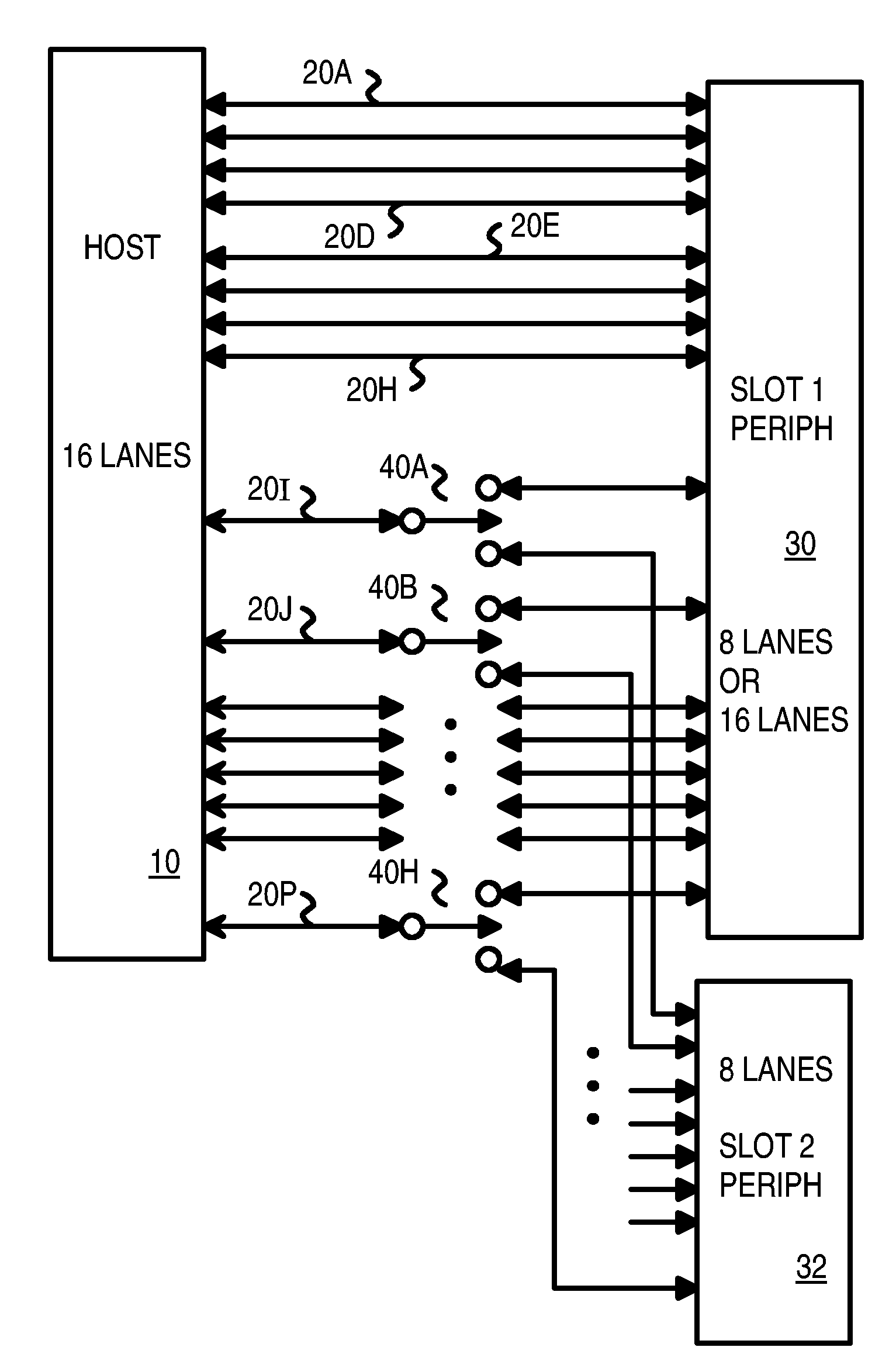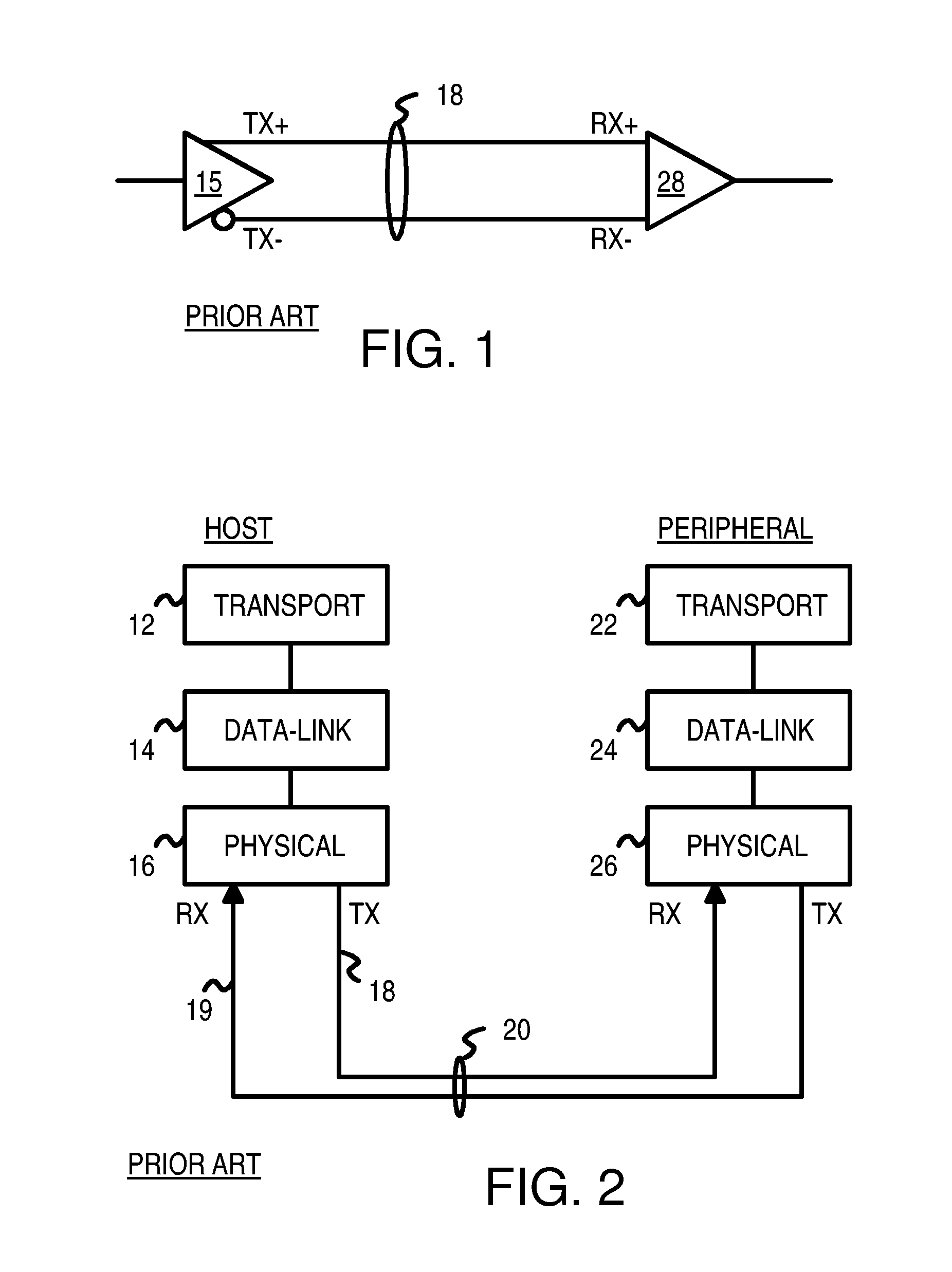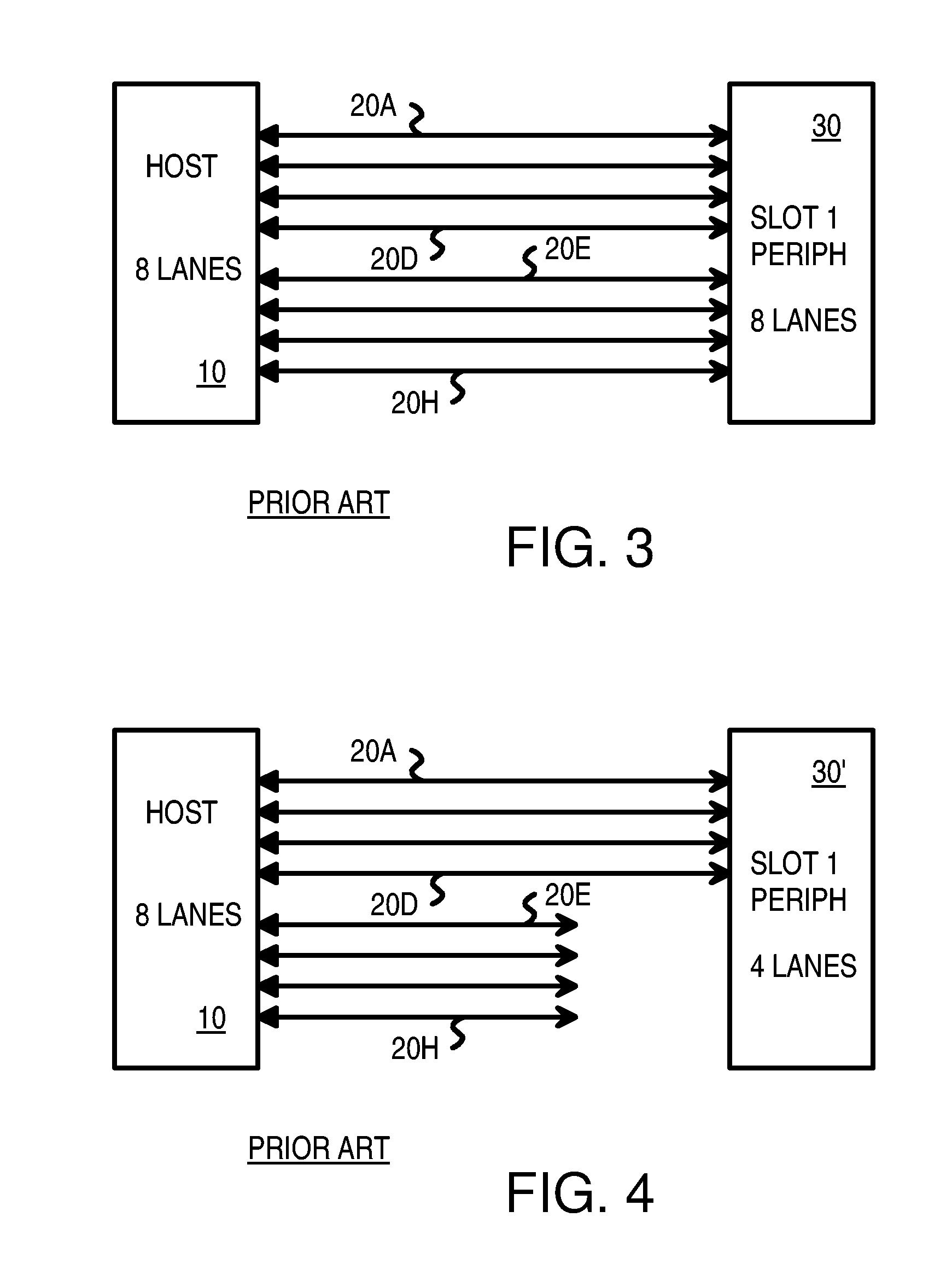Optimized topographies for dynamic allocation of PCI express lanes using differential muxes to additional lanes to a host
a topography and differential mux technology, applied in the field of serial buses, can solve the problems of slow transport-layer switch, inability to support an odd number of lanes, and possible combinations of peripherals to have less than optimal lanes,
- Summary
- Abstract
- Description
- Claims
- Application Information
AI Technical Summary
Benefits of technology
Problems solved by technology
Method used
Image
Examples
Embodiment Construction
[0039]The present invention relates to an improvement in serial-bus lane allocation and switching. The following description is presented to enable one of ordinary skill in the art to make and use the invention as provided in the context of a particular application and its requirements. Various modifications to the preferred embodiment will be apparent to those with skill in the art, and the general principles defined herein may be applied to other embodiments. Therefore, the present invention is not intended to be limited to the particular embodiments shown and described, but is to be accorded the widest scope consistent with the principles and novel features herein disclosed.
[0040]FIG. 7 is a block diagram of allocation of ports and lanes to slots using the parent application. Root complex 64 can be a PC or other Peripheral Component Interconnect Express (PCIE) host. Programs running on the host communicate through ports such as on a transport layer. Ports 60, 61, 62 are three por...
PUM
 Login to View More
Login to View More Abstract
Description
Claims
Application Information
 Login to View More
Login to View More - R&D
- Intellectual Property
- Life Sciences
- Materials
- Tech Scout
- Unparalleled Data Quality
- Higher Quality Content
- 60% Fewer Hallucinations
Browse by: Latest US Patents, China's latest patents, Technical Efficacy Thesaurus, Application Domain, Technology Topic, Popular Technical Reports.
© 2025 PatSnap. All rights reserved.Legal|Privacy policy|Modern Slavery Act Transparency Statement|Sitemap|About US| Contact US: help@patsnap.com



